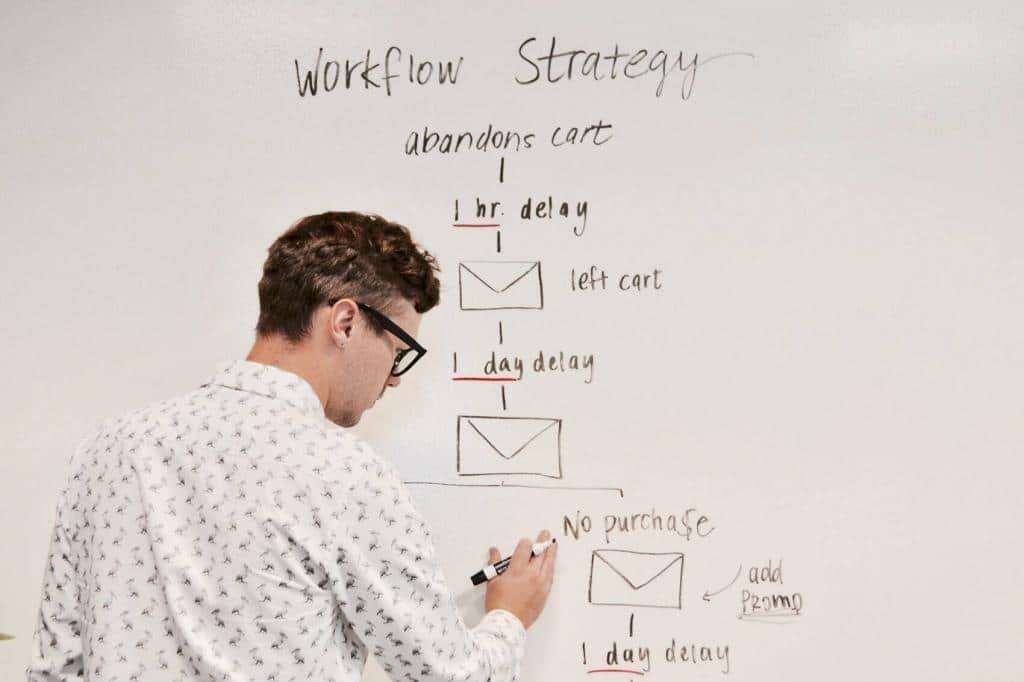Your biggest question as an agency owner should be: how can we make more money without compromising our quality — or working every waking hour? Boosting profitability can be tricky for a marketing agency as it’s not easy to cut corners. Ultimately, there’s still much work to be done, and hiring cheap designers or writers is rarely the solution. A sustainable, streamlined approach will go much farther!
This article discusses how automation, agile work, and on-demand services can help you reduce your expenses while providing your clients more value — and boosting your profitability along the way.
Ad Agencies Explained
Before we dive in, let’s answer the question, “how do ad agencies work?”. Advertising agencies provide clients with the creative processes of bringing their campaign ideas to print and online ads. After diligently combing client information and pitching ideas, ad agencies can hone their expertise to present advertisements that drive their client’s campaigns and revenue.
Are Marketing Agencies Profitable?

Yes, marketing agencies are profitable, but you must keep in mind that you can only charge clients so much for your expertise and the value you provide.
Things to consider; your marketing agency may have substantial overhead from advertising, equipment, software, and even physical office space. Expenses are inevitable, and the costs will continue rising along with everything else, that’s- the nature of running a business.
Online only marketing tends to run slightly differently, and how much digital marketing agencies earn varies by the number of clients an agency has. Still, it is worth noting that digital agencies may have a differential of overhead costs as they may not have the physical infrastructure or the same workforce as a traditional agency.
How do marketing agencies make money? It’s simple if you’re good at what you do and efficient while doing it. You can boost your profit margins and reduce your expenses with simple changes to your workflow and technology; this is especially important in the COVID era!
Read on to learn how to get there using automation, agile processes, and on-demand creative services!
1. Marketing Automation

The more tasks you can take off your employees’ plates, the more time they’ll have to do high-value work. Even the processes of checking emails and updating CRMs or project management systems eat into their precious time. Every hour they spend answering lead queries and configuring ads is an hour taken away from clients.
Many agencies are embracing automation platforms to replace employees in routine tasks. Depending on the sophistication of your chosen provider, most marketing automation platforms can:
- Automatically capture leads
- Track/Nurture leads: ensures potential clients don’t slip through the cracks and existing clients often have better operating experiences.
- Follow up on messages
- Send Brochures/Proposals
- Integrate with:
- Messaging apps
- Ad Platforms
- E-commerce features
Automation can be a bit cumbersome and expensive to set up, but once it’s rolling, your team members will have fewer menial tasks filling up their day and more time to work on their core tasks.
So what is the best way to manage revenue streams and maximize agency profitability? Answer: Marketing automation. Marketing automation improves your agency’s reputation, converts more leads, and ultimately boosts your revenue and profitability.
2. Agile Workflows
There is a new reigning philosophy in workplace management, and it’s derived from the Agile software development framework. This approach emphasizes:
- Iterative work
- Regular feedback
- Cross-functional teams: help to improve efficiency and cut down on project delays.
Many marketing agencies are now implementing an agile framework to boost productivity and profitability.
For example, instead of siloing tasks into different departments (copy, design, ads, etc.), some agencies are now building project- or client-centered teams comprising people with complementary skill sets. This structure reduces the review time between project phases and helps ensure that client feedback is implemented quickly.
How your agency implements agile is up to you, but it’s worth considering if you’d like to streamline your processes, which in turn saves money and boosts your profits!
3. A Subscription-Based Creative Team
Your most considerable expense is typically your workforce. As the saying goes, you get what you pay for, and that’s true for creative services, tech support, and marketing expertise. Your in-house team provides core services; then, you may have a collection of freelancers and interns you lean on for additional support.

Think about this, what happens if your agency takes on a project so big that your regular team is forced to work overtime — or pull themselves away from other tasks? What if you need to juggle internal initiative (e.g., a rebranding or major stakeholder presentation) with client work? Or if someone goes on parental leave and you find yourself squeezed for resources?
Hiring another full-time employee — or even a part-time one — can be expensive and time-consuming. Some agencies solve this problem by hiring full-time contractors or temp workers: people who provide services under your direction yet don’t qualify for benefits.
There are a couple of issues with this model even beyond its questionable ethics, and some nations are revamping labor regulations in ways that would make it challenging to hire so-called “permalancers.” Even if you only need short-term help, issues arise.
Downsides to hiring contractors or temps workers:
- Not pre-vetted/overstate their qualifications
- The search/interviewing process can be time consuming
- Client fees
- Potential poor performance risks
If you find contractors through professional networks such as LinkedIn or via personal referrals, you’ll probably find more qualified people. However, these are typically specialists who charge a premium for their services. They often run their businesses privately. Therefore, you would be their client. Under emerging labor regulations, these arrangements are best for hiring consultants or creatives who provide a service outside your business’s purview, e.g., hiring a web designer if your agency does not offer web design. In other words, it’s often cost-prohibitive to outsource this way.
Creative Services
The solution is the new on-demand model for creative services. These platforms combine the best of both worlds: pre-vetted, highly qualified freelancers who deliver only the tasks you need.
Companies using this model include:
- Flocksy
- DesignPickle
- 99Designs
Each platform offers a different combination of services, but all draw from a talent pool, essentially crowdsourcing all clients’ projects. This decentralized approach helps ensure that contractors are compensated fairly, yet you, as the client, don’t need to spend the time and money to recruit and evaluate them. You pay a flat subscription fee to gain access to on-demand services whenever you need them.
It’s like the Netflix of creative services. Many agencies find that they spend up to 73% less on outsourcing when they use a subscription-based creative workforce.
Wrapping Up: What’s best for your agency?
Ultimately, boosting your agency’s profitability comes down to streamlining your workflow and sustainably hiring the best people — and let the bots do the rest! Running on a shoestring budget often isn’t feasible, but you can dramatically reduce your expenses and enjoy better profitability with these tweaks to your technology and team structure.









